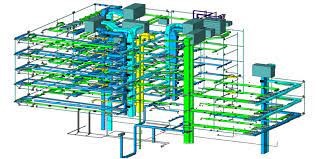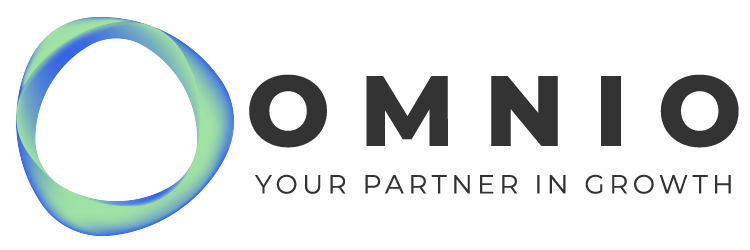Process Improvements & Value Engineering
- Home
- Projects
- Products
- Operations & Process Management
- Process Improvements & Value Engineering
The adage that ‘Time is Money’ has become more critical now than ever. Change is the only constant, yet it is the most difficult to change largely on account of two major aspects:
- You have a set system in place, and you don’t know where to start making the changes given the complex interconnected nature of your business’ processes.
- You don’t know how technology can make things better for you, and you are don’t know who will take time out to understand your business and design and implement these changes.
Omnio can be your perfect partner in your ambition to become even bigger and profitable and can help you through this process while you continue to work without any disruption in your current operating business model.
We will adopt an extensive consultative process with you while we understand the complex processes and sub-processes of your business, and create an integrated system embedded on technology platforms that can be operated from the ease of your cell phones and computer desktops/laptops, allowing you to monitor each process and sub-process on a real-time basis.
Omnio will also work with you to identifying issues and approaches that may be adopted to enhance your business’ operational efficiency and guiding you to take actions ranging from addressing minor operational issues to creating business restructuring strategies, if required, after detailed analyses of performance of each process and sub-process of your business. These process automation initiatives accord immense benefits to all scales of business, whether these are large enterprises, MSMEs or small manufacturing and trading businesses.
Value Engineering
Value Engineering involves considering the availability of materials, construction methods, transportation issues, site limitations or restrictions, planning and organization, costs, profits, and so on. Benefits that can be delivered include a reduction in life cycle costs, improvement in quality, reduction of environmental impacts, and so on. This exercise that involves most of the project team as the project develops. It is about taking a wider view and looking at the selection of materials, plant, equipment and processes to see if a more cost-effective solution exist that will achieve the same project objectives.
The Process of value engineering involves:
- Identifying the main elements of a product, service or project
- Analysing the functions of those elements
- Developing alternative solutions for delivering those functions
- Assessing the alternative solutions
- Allocating costs to the alternative solutions
- Developing in more detail the alternatives with the highest likelihood of success
1. Project Feasibility
- Site and Catchment Analysis
- Demand Assessment
- Supply Mapping
- Product Mix Derivation
- Product Pricing
- Development Strategy
2. Architectural/ FSI/ Zoning Regulations
- Review of DBR & design with respect to Design Brief.
- Review of design in terms of core efficiency, FSI to carpet ratio, internal circulation (furniture layout, toilet layout etc), flexibility for future provisions etc.
- Project Massing review with respect to design constraints, FF regulations, height constraints, elevational treatment etc.
- Review of finishes (internal & external), fittings & fixtures& alternative solutions based on space efficiency, cost, availability, durability etc.
- Review of alternative solutions in terms of possible impact on other design aspects of the project as well as impact of alternative solutions of other designs on arch. Design with co-ordination of other teams in VE & short list the solutions.
3. Structural Designs
- Review of loading parameters, load system, construction methodology in terms of onsite plant, machinery, construction sequence, ease of construction etc.
- Review of possible change in structural design to suit the construction sequence.
- Review of possible changes in foundations – most beneficial based on Geotechnical report.
- Review of possible changes in terms of optimization of column grids, sizes, flooring system, etc.
- Review of possible material substitutes in terms of slabs, block works, finishing works etc.
- Review of possible changes in external façade system in terms of cost, material etc.
- Review of alternative solutions in terms of possible impact on other design aspects of the project as well as impact of alternative solutions of other designs on the structural Design with co-ordination of VE team & short list the solutions.
4. Façade System
- Review of possible changes in façade design in terms ease of construction, reduction in cost etc.
- Review of possible alternative specifications based on availability, feasibility, cost, ease of construction etc without affecting quality of the project parameters.
- Review of alternative solutions in terms of possible impact on other design aspects of the project as well as impact of other design solutions on the Façade design with co-ordination of other teams in VE & short list the solutions.



5. MEP Design & Alternative Technologies
- Review of loading parameters, load system, construction methodology in terms of onsite plant, machinery, construction sequence, ease of construction etc.
- Review of possible change in structural design to suit the construction sequence.
- Review of possible changes in foundations – most beneficial based on Geotechnical report.
- Review of possible changes in terms of optimization of column grids, sizes, flooring system, etc.
- Review of possible material substitutes in terms of slabs, block works, finishing works etc.
- Review of possible changes in external façade system in terms of cost, material etc.
- Review of alternative solutions in terms of possible impact on other design aspects of the project as well as impact of alternative solutions of other designs on the structural Design with co-ordination of VE team & short list the solutions.
6. Scheduling, Planning and Execution
- Review of construction methodology proposed in the project.
- Review of the alternative construction methodology if any, which can give best possible results within the time period under master schedule.
- Review of alternative materials in terms of cost, efficiency, durability, availability, current market practice etc.
- Review of all alternative solutions in terms of possible impact on the construction methodology, master schedule, and cost of the project as well as impact of alternative construction solutions on other designs along with co-ordination VE team & short list the solutions.
7. QS & Costing
- Review of the DBRs & designs with respect to Design Brief.
- Review of all the BOQs, contracts /cost estimate /budget/ master schedule of the project.
- Reviews BOQ if the quantities considered need to be revised / any items are missed out from the design.
- Analyse the terms & conditions in the contracts which can affect the schedule of the project & increase the budget.
- Evaluate possible cost reduction for current design parameters, contract parameters.
- Evaluate possible changes in cost in co-ordination with other members of VE team, in each of the various alternative solutions suggested in the design by VE team & assist in short listing the solutions.

